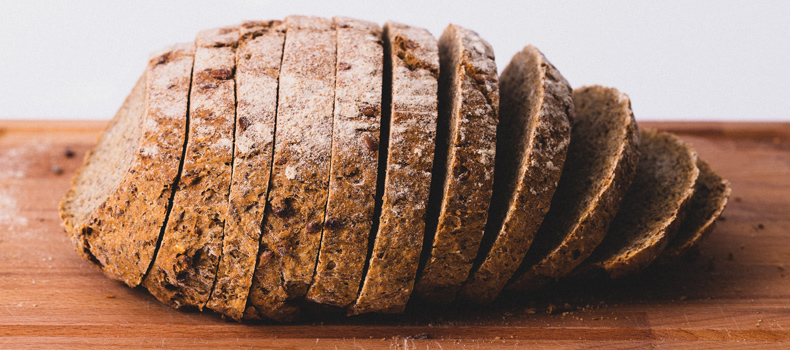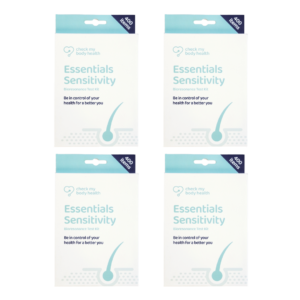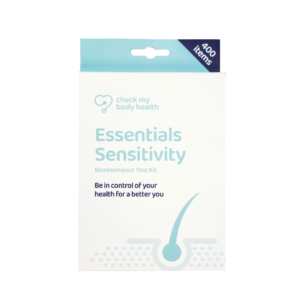Published October 22, 2020
It’s becoming increasingly more common to hear about the “bloating”, “gassiness” and “indigestion” which follows for many after having some bread.
Whilst common, it’s certainly not “normal” to experience this kind of reaction. This is not however an allergy (as an allergic reaction would be much more severe) but a “sensitivity” or intolerance to wheat itself; the core ingredient in most breads.
It’s also important to note that this does not necessarily indicate a gluten intolerance or defines you as being coeliac; non-coeliac gluten sensitivity may explain why bread disagrees with some and it’s important to note that wheat is a complex mix of various other proteins and carbohydrates, which could also be the possible culprit.
Where does a specific intolerance / sensitivity come from?
Food intolerances/ sensitivity are becoming increasingly more common and it is estimated that as much as 20% of the world’s population may be dealing with some kind of intolerance.
Intolerances/ sensitivity can be categorized as an isolated functional disorder (this would be if you don’t produce enough of a given enzyme to break down a specific dietary component – (inadequate lactase production leading to dairy sensitivity is one such example) or a structural issue within the gastrointestinal tract itself (such as previously induced damage.
What are the symptoms of a food intolerance / sensitivity?
Whilst individual reactions vary, signs and symptoms of bread (food) intolerance / sensitivity often include;
- Bloating
- Gassiness
- Fatigue
- Headaches
- Migraines
- Joint pain
- Skin breakouts
- Low mood
Dealing with an intolerance to bread
The first thing to note is that you’re likely not intolerant to bread per se, but a component within the bread itself. Bread is created through the mixing, proofing (or lack thereof) and baking of a bunch of ingredients and one or more of these ingredients could be why you’re experiencing the aforementioned, unwanted symptoms.
An obvious change would be taking bread out of your diet on its own, as many people do, and you may start to feel better. However, if you have a wheat, gluten or yeast intolerance then there will be other foods that have to be removed and (carefully) substituted as well.
For example, yeast can be found in many food stuffs and supplements apart from bread; foods that include Marmite, vinegar, alcohol, ginger beer, stock cubes, antibiotics and supplements.
Yeast may be described on food labels as hydrolysed protein or hydrolysed vegetable protein. Fungi-containing foods such as cheese, mushrooms and peanuts can also trigger your intolerance / insensitivity.
Those with wheat intolerance should avoid all wheat products, not just gluten-free products. Those with gluten intolerance should avoid all products containing gluten. If these foods are removed from your diet then they will need to be substituted with appropriate alternatives so as to avoid becoming potentially nutrient deficient (depending on what the previous foods were contributing to your diet).
There are certain steps to take to help deal with symptoms outside of elimination of a given food, and/or if you are in the process of eliminating what you believe to be trigger foods, but are still suffering with symptoms.
Trial & error; keeping a food diary may help you identify the cause of a flare up. It may also help you identify factors outside the food itself which can impact symptoms (such as stress, fluid intake, sleep pattern, hormonal cycle and even eating mechanics).
Peppermint oil; use of peppermint oil has improved the severity of symptoms associated with intolerances (including gluten sensitivity / intolerance).
Probiotic use; evidence points to their being a significant benefit of supplementing with a probiotic if you do suffer with non-coeliac gluten sensitivity / intolerance.
Alternatives to look for
Thankfully, we live in a glorious time were there are plenty of bread options out there which are likely to be totally fine on your digestive system (and body in general).
Gluten free options would of course be the most well known and certainly worth trialling. Whilst not necessarily gluten free, rye and sourdough bread varieties are wheat free and so may be a viable option if gluten isn’t the issue.
Sprouted bread is becoming quite popular too. Made from grains that have been allowed to germinate or sprout, these varieties will often offer wheat and gluten free options.
If you’re feeling like something a bit more exciting, a nut and seed-based loaf may be worth looking into or even corn-based products, such as corn tortillas and taco shells, which are a popular component of the Mexican cuisine.
Conclusion
The cases of bread related intolerance / sensitivity symptoms and issues are on the rise. We should be careful of blaming bread itself however, as it offers much in the way of nutrient value to our diet. There can be other components of bread that are causing the issue (likely being gluten, wheat or yeast).
If you are suffering from intolerance / sensitivity issues, look to identify the cause through process of elimination and opt for an alternative which will be much more agreeable for your digestive system (such as those we outlined). We’d love to hear more about the alternatives you’d tried too!
Written by Bev Walton
Food Writer and Nutritionist, dietician
A chef of over 35 years with experience in all types of cuisine, dietary plans, recipe development, health and nutrition. I have been writing for over 10 years for both magazines, websites and ghostwriting for ebooks, Kindle and fully published books. I have a degree in nutrition and dietetics and work with restaurants and organisations within the healthcare profession. I am also able to take high quality photographs of recipes created. No writing task is too great, and whilst I specialise in the above, I am able to write about any topic you throw at me. Member of the Guild of food writers.







